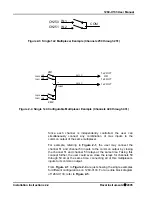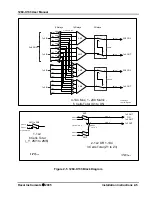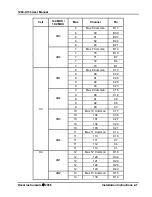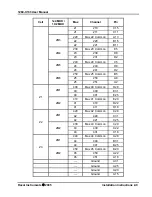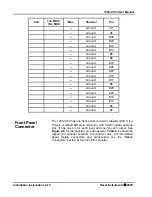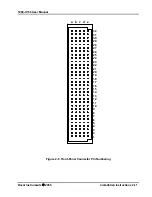
1260-X133 User Manual
Specifications 1-4
Racal Instruments
©
2005
For example, if a 1260-X133 module has 8 relays closed, passing
a current of 2A, then:
Total power dissipation =
[(current)
2
* (path resistance) * 8] + (quiescent power)
By substituting the actual values:
Total power dissipation =
[(2
A)
2
* (0.7
Ω
) * 8] + ( 2.5 W) = 24.9 W at 55
°
C
This is acceptable power dissipation for an individual plug-in
module. In practice, rarely are more than 25% of the module’s
relays energized simultaneously, and rarely is full rated current run
through every path. In addition, the actual contact resistance is
typically one-half to one-fourth the specified maximum, and
temperatures are normally not at the rated maximum. The power
dissipated by each plug-in should be no more than 15 W if all six
slots are used simultaneously. This yields the following guideline:
0.5 A
Max. 71 channels closed
1 A
Max. 17 channels closed
2 A
Max. 4 channels closed
The numbers in the above table represent worst-case, elevated-
temperature, end-of-life conditions.
Additionally, if fewer plug-in modules are used, more power may
be dissipated by the remaining cards. By using a chassis with high
cooling capacity, such as the Racal Instruments 1261B, almost any
configuration may be realized.
About MTBF
The 1260-X133 MTBF is 130,226 hours at 25
°
C and 117,034
hours at 30
°
C, calculated in accordance with MIL-HDBK-217E,
with the electromechanical relays set at 50% rated load at 85
°
C.
Factors affecting relay life expectancy are:
1. Switched
voltage
2. Switched
current
3. Switched
power
4. Maximum switching capacity
5. Maximum rated carrying current
6. Load type (resistive, inductive, capacitive)


















